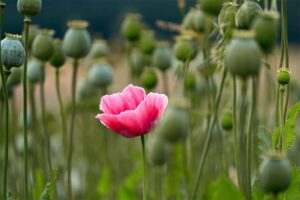 I am an absolute sucker for old-style plant catalogs. Sure, vendors offer greater variety online, and I always order that way, but there is something irresistible about all of those vibrant flowers, fruits and vegetables. They demand your full attention and all but leap off the pages, making it clear that their ultimate intention is to launch themselves into your garden via your credit card.
I am an absolute sucker for old-style plant catalogs. Sure, vendors offer greater variety online, and I always order that way, but there is something irresistible about all of those vibrant flowers, fruits and vegetables. They demand your full attention and all but leap off the pages, making it clear that their ultimate intention is to launch themselves into your garden via your credit card.
Since I know that catalog insanity will overtake me every year at this time, I have resolved to make the best of it. “Making the best of it” this year means trying something new—growing species, varieties and methods that I have never tried before.
Over the years, I have grown cherry tomatoes in containers a few times, but mostly obtained my tomatoes at the local farmers’ market. These days, even many of the local farmers grow their tomatoes in greenhouses to get big, bright fruits that are more uniform and saleable. A ripe summer tomato always tastes better than one that was picked green, gassed, and finally shipped a great distance to the supermarket. But I think that the best tasting tomatoes are grown in the earth, ripened in unfiltered sunshine, subjected to the vagaries of weather, and picked at their peak. The only way to make sure that I get such tomatoes is to grow them myself. Growing from seed ensures the best choices of variety, so that is what I intend to do. I love the heirlooms, but I also want an abundant harvest, so I may pick a more modern type for optimal results.
I will allot some sunny space to those tomatoes, but most of the available garden real estate will go to flowering plants, because I am looking for abundant color and sumptuous bouquets. This year I resolve to go beyond the usual zinnias, snapdragons and cosmos, and try some new annuals and perennials.
Like many people, I have a shady garden section. I grow enough hostas to start my own nursery, and a burgeoning number of ground-covering hellebores. Injecting some color into the mix would bring light to the shade and joy to my heart. I think I will try nicotiana, which loves light shade and exudes strong fragrance. ‘Select Watercolors’ is a hybrid variety that features a mix of five-petaled white, greenish and pink flowers, some of which may change color as they age. The back of my shady area is somewhat bereft of interest, and these nicotiana, which grow up to four feet tall, would fill that gap.
Fragrance is essential in my garden, which is why it seems strange that I have never grown stocks or Matthiola incana, colorful summer bloomers on medium-tall stalks. The spice-scented flowers open in shades of pink, purple, white and yellow, and make excellent cut flowers. Some varieties feature fluffy double flowers. I remember that as the nineteenth century turned to the twentieth, gardener/poet Celia Thaxter grew stocks in her celebrated beds on Appledore Island of the coast of New Hampshire. They were among the plants celebrated in an impressionistic blur of color by artist Childe Hassam. Sometimes life is greatly improved by seeing it in an impressionistic blur. I am eager to find out whether that will hold true when I add stocks to my garden.
If it snows again this winter, I may throw caution to the winds and throw poppy seeds on the snow. This is a time-honored way of jumpstarting annual poppies like the opium poppy, or Papaver somniferum, on their journey to late spring and summer bloom. I have had limited success with the big Oriental poppies, and none at all with the annual varieties. Maybe the devil-may-care method will produce better results, not to mention the lazy gardener’s salvation—reseeding in subsequent years.
I yearn for black-eyed Susan vine, or Thunbergia alata, cascading from hanging baskets. This year, I will not default to buying the one variety available in starter packs at the garden center, but will grow an array of new-to-me yellow and orange varieties, like the “Sunny Susy” cultivars. I can order them from an online nursery, plug them into my hanging baskets, provide water and a hopeful attitude, and watch them tumble fetchingly out of their containers.
Trying new plants is a risk, but what with weather, pests and plagues, all gardening is risky. Fortunately, the combination of heady catalog copy and the hope that springs eternal in gardeners at the start of each new season will help me overcome my fear of risk and lead me to beautiful results.
